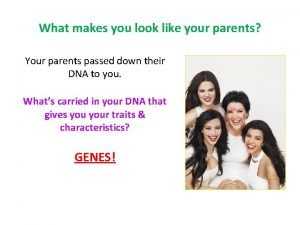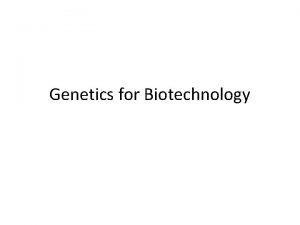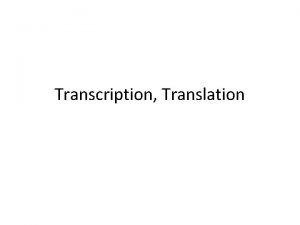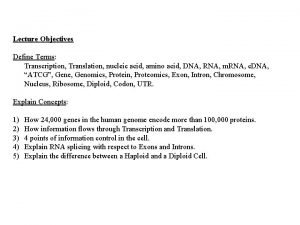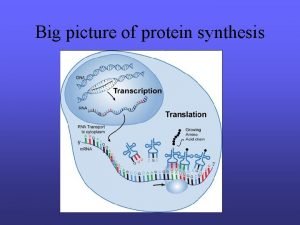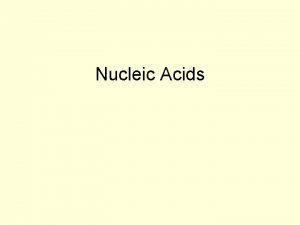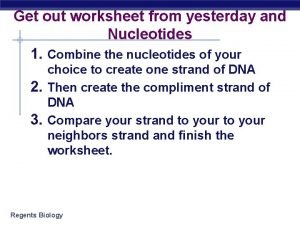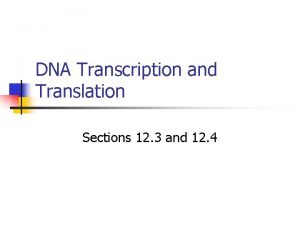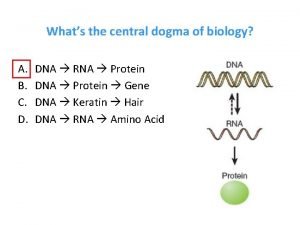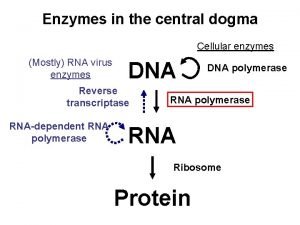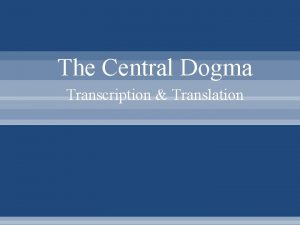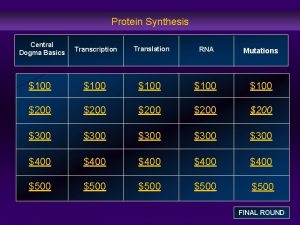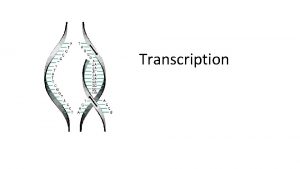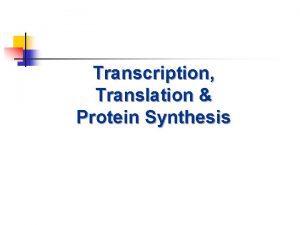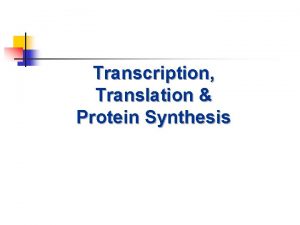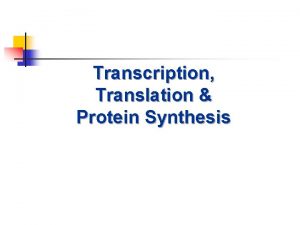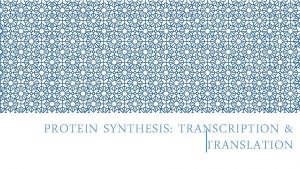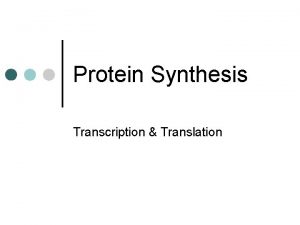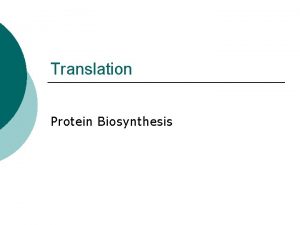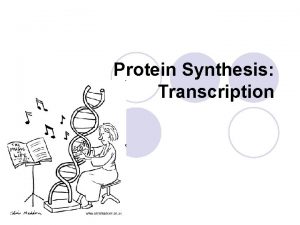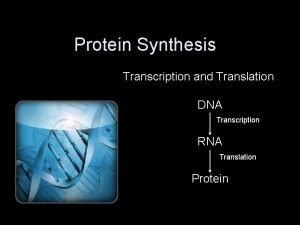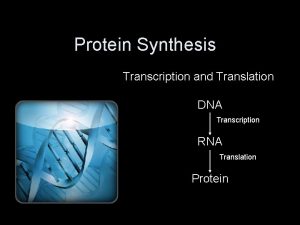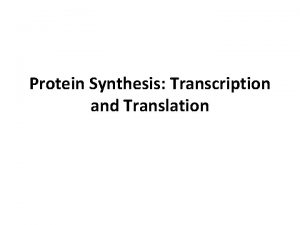Protein Synthesis Transcription and Translation The Central Dogma
















- Slides: 16

Protein Synthesis: Transcription and Translation

The Central Dogma

DNA • DNA never leaves the nucleus • DNA is the master copy of the directions a cell needs to live, it needs to be protected DNA in the nucleus is safe DNA in the cytoplasm can be destroyed

Three Types of RNA • Messenger RNA (m. RNA) copies DNA’s code & carries the genetic information to the ribosomes. • Ribosomal RNA (r. RNA) along with protein, makes up the ribosomes. • Transfer RNA (t. RNA) transfers amino acids to the ribosomes where proteins are made. • RNA is a copy of DNA that goes out into the cytoplasm to tell the cell what to do.

REVIEW 1. Why is RNA needed? _____________________________ 2. How many types of RNA are there? ____ 3. List the types of RNA. _____________________________

Transcription • • Unzip DNA Match up bases to one side of DNA m. RNA detaches from the DNA m. RNA moves out of the nucleus and into the cytoplasm to make proteins.

Practice Transcription DNA: GAG AAC TAG TAC ACT m. RNA: • m. RNA Carries the message for a specific protein • Sequence of 3 bases called codon • AUG – methionine or start codon • UAA, UAG, or UGA – stop codons

Translation 1. m. RNA moves out of nucleus and into cytoplasm 2. m. RNA attaches to a ribosome 3. Transfer RNA (t. RNA) decodes the m. RNA and brings correct amino acids (protein synthesis) 4. Anticodon (3 bases on t. RNA): Matches up to codons on m. RNA 5. Protein (chain of amino acids) detaches from ribosome and goes off to work in the cell

t. RNA Illustration Example: Codon ACU Anticodon UGA ACU

REVIEW DNA Replication Transcription (m. RNA) Translation (t. RNA)

Protein Synthesis

REVIEW 1. What is different between transcription and translation? _______________________________________ 2. What are the monomers of protein? ___________________________ 3. List the steps of protein synthesis in order. _________________________

Amino Acid Charts

Let’s Practice! Use the m. RNA you transcribed from this strand of DNA and translate it into a protein chain. Use the codon charts! DNA: TAC CTA GGG AAC CTG CGC AAT CGT m. RNA: Protein:

Let’s Practice Transcribe and Translate the sequence after a frameshift mutation: DNA: TAC CTA GGG ACC TGC GCA ATC GT m. RNA: Protein:

Let’s Practice Transcribe and Translate the sequence after a point mutation: DNA: TAC CTA GGG AAC CTG CTC AAT CGT m. RNA: Protein:
 Dna rna protein central dogma
Dna rna protein central dogma Central dogma
Central dogma Transcription and translation
Transcription and translation Dna coloring transcription and translation
Dna coloring transcription and translation Perbedaan replikasi virus dna dan rna
Perbedaan replikasi virus dna dan rna Codon wheel
Codon wheel Transcription and translation bbc bitesize
Transcription and translation bbc bitesize Dna transcription and translation
Dna transcription and translation Dna replication transcription and translation
Dna replication transcription and translation Transcription and translation picture
Transcription and translation picture Translation
Translation Biology transcription and translation
Biology transcription and translation Rna matching
Rna matching Differences between dna and rna
Differences between dna and rna Transcription
Transcription Whats the central dogma of biology
Whats the central dogma of biology Initiation steps
Initiation steps
